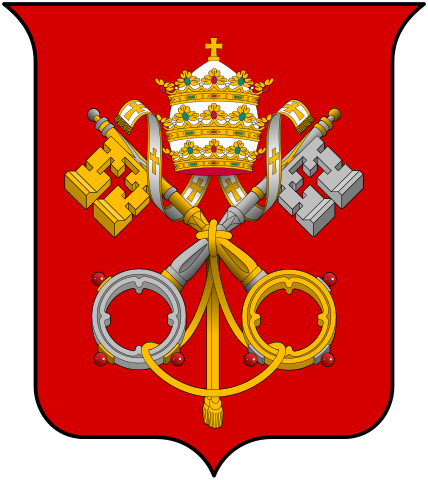The ritual forgiveness of sins — the Sacrament of Penance, or Reconciliation, Absolution, Confession or whatever, has been called by the Pope himself to be an “odious sacrament“, one that nobody wants to subject themselves to unless really necessary. For unlike other means of grace, this sacramental encounter between penitent and confessor is actually a tribunal. It is actually a trial of the sinner’s soul conducted by the priest in the place of Christ.
As such, it is a major source of the Church’s power over the Catholic soul. It is a forum where the most intimate secrets are revealed, which is why the Roman Catholic Church has always insisted that the Seal of Confession is sacred, and inviolable. Nothing can break it, and theologians have gone to ridiculous lengths to propose theoretical cases where no matter the awful consequence, it may not ever be broken. Not by direct orders of a superior, not even by the Pope, not by anybody, for any reason.
But what if it were not so simple? What if the Pope had a way around such solemn and absolute restrictions?
It turns out there most certainly is. But not exactly like I thought.
I called this elusive Holy Grail, the “Master Key“. The idea that there could even be such a thing came to me after reading a 19th century academic History of Auricular Confession by an American scholar named Henry C. Lea. He wrote:
“…there was an even higher authority for the violation of the seal, for the confessor in this case was a cardinal, who, under dispensation from Eugenius IV, revealed a confession the knowledge of which was important to the papal policy of the moment.”
A small footnote cryptically referred to a work by a later pope’s very own personal theologian which justified the act. Certainly can’t get much more authoritative than that. But a papal dispensation of the seal of the confessional? That’s something that apologists have said is absolutely impossible! And for good reason.
Such an ability would confirm the Protestants’ worst suspicions. The Master Key could turn a supposed instrument for relieving guilt into a very powerful means of manipulating people. Because everything sacramentally confessed is automatically assumed to be true: they are admissions given under oath of crimes committed and contemplated.
There are, of course, the possibilities of blackmail if such information gets out, of public shame and disgrace, of lives ruined. That is why secrecy is so insisted upon. People would not avail themselves of the possibility of forgiveness otherwise. What secret price might be exacted for forgiveness? What deals in the dark might it be necessary to make?
For instance, the principle is that a thief has only to pay 10% of his ill-gotten gains to the Church to be forgiven. How useful could it be then to know who the criminals are? Or what about sex? Not only the private kinks and perversions of the elite, but secrets of parentage and thus inheritance could break families or even kingdoms.
Confession without privacy guarantees would be like handing one’s jailer a full written confession to obtain mercy. A key to unlock the secrets on demand would give its possessor unimaginable power over the laity.
It would give even more within the Church itself. Such a Master Key could determine exactly which candidates would be “worthy” of appointment, or susceptible to pressure. This more than anything else would finally solve the great mystery of iniquity; why it is that the Church is so incapable of reforming itself.
The Master Key could enable the perpetuation of tight-knit self-protective interest groups among the hierarchy which would be impossible to root out.
If anyone could have used such a power it would have been Pope Eugene IV. He came to the tiara shortly after the Great Schism ended, and spent most of his reign fighting uppity councils and an antipope for his throne. In my search for the actual historical basis of the incident, I counted no less than 8 cardinals as well as other prelates (including a future pope) who defected to one party or another and later returned to his obedience with tales to tell. There would have been plenty of opportunity as well as an urgent need to know the sins of the pope’s enemies.
The way the Vatican works, however, is that if the Pope claims he can do something once, he can do it any time he wants. Moreover, he can delegate that power and take it back any time, too. This means that from one small thoughtless incident, whole traditions can be invented.
Indeed, some did evolve and always to the benefit of the papacy. For instance, Charlemagne once kindly helped an elderly Pope mount his horse by holding his stirrup. Within a century there was a mural in the Vatican showing this as a pious act of self-humiliation. Within two centuries, on the basis of the picture, Rome claimed that holding the stirrup was a sacred duty that the Emperor owed the Pope to show the superiority of the spiritual office over the temporal. And so it was that the Holy Roman emperors found themselves holding the Pope’s stirrup like a stableboy each and every time they met, until the empire was no more and the pontiff cruised around in a popemobile instead.
With all this in mind, I spent two years tracking this one reference down, scouring the Internet, searching and downloading God knows how many books looking for evidence. I finally located the text itself at the University of Chicago and acquired a photocopy of the right section. The source is the Summa Summarum of a theologian called “Prierias“. This was a dense, early Sixteenth-Century textbook of theology printed in tiny type with strange abbreviations and symbols replacing whole syllables, all in bad Late Ecclesiastical Latin. It took another two years off and on just cleaning it up so I could get it translated.
I had high hopes. Sylvestro Mazzolini was the Pope’s own theologian, the “Master of the Sacred Palace”. The man was so famous in his own day that, like Da Vinci, he was known mainly by his hometown, hence “Prierias”. He vetted sermons preached before the Pope, and his chief claim to fame was that he wrote the first rebuttal to Martin Luther, whom he insulted so badly that the reformer left the Catholic Church in a rage. This, then, was no theological lightweight, but an expert, even if reactionary. His book was printed over 48 times over several centuries. There is no question that whatever Prierias said was officially blessed policy.
Eventually, I hired a Latin scholar, a gentleman from Cambridge, who did a fantastic job turning it all into English. But at first I was disappointed. Lea had it backwards. The expanded discussions showed was the pope’s own confession that the cardinal revealed — with the pope’s tacit permission, so he was not rebuked.
The text is extremely difficult even in translation. The section quotes yet another theologian, Panormitanus, also known as Cardinal Nicolo de’ Tudeschi, “the most famous jurist of the fifteenth century”, who might well have been the very cardinal involved in the actual incident.
According to the translator, “if so, the text suggests that he passed on a secret confessed to him, contrary to the seal, when he was in the presence of the Pope because, in the circumstances, the Pope could somehow aid the situation that the sin concerned.”
Thus the cardinal was not rebuked. The seal is not violated, according to the text, if the information is told secretly to “someone who could be of use”. So the Master Key is not what I imagined originally: there is no secret papal decree mandating that seal of the confessional does not apply under certain circumstances. Or maybe there is. The Church managed to hide the Inquisition’s involvement in clergy abuse for hundreds of years, so who knows?
But the real key is that the Pope could be told because he “could somehow aid the situation”. That’s the loophole: priests are encouraged to ask advice — even in writing — about specific difficult cases from their superiors or those clerics who could assist them. The rules are that communications should be very discrete and not use names or provide unnecessary details. But in cases where the priest in question was the chaplain of a royal house, for instance, it might not be too difficult to guess.
The confessional can and will be used as a clandestine intelligence-gathering device, as it was during World War II by the Vatican. Rome relied heavily on reports from priests confessing SS-men to get the first confirmations of the Holocaust from inside Germany as early as 1942.
As for who might be the recipient of such information in Rome, the logical person would be the “Apostolic Penitentiary“. Though the title has likely changed by now, this cardinal is one of the few who remains in power after the pope dies, and has his own private means of communication with the outside world — even during the top-secret Conclave! This is supposedly because he is in charge of dispensations and forgiveness, and therefore must constantly remain in touch with the outside. This conveniently allows him to receive intelligence and inquiries at any time.
Is he the Director of Intelligence for the Vatican? A telling clue may be that the Apostolic Penitentiary is considered so important, that if he dies during Conclave, a new one is elected immediately — even before a new pope.
Could the Master Key have been visible all along? The logo of the Holy See is the papal tiara of universal authority over a pair of crossed keys which open and lock Heaven and Hell. This represents the so-called Power of the Keys claimed by the Pope:
Jesus answered him, “Blessed are you, Simon Bar Jonah, for flesh and blood has not revealed this to you, but my Father who is in heaven.
I also tell you that you are Peter, and on this rock I will build my assembly, and the gates of Hades will not prevail against it.
I will give to you the keys of the Kingdom of Heaven, and whatever you bind on earth will have been bound in heaven; and whatever you release on earth will have been released in heaven.” [Matt. 16:17-19]
Note that this isn’t about opening and shutting things. It’s about permitting and forbidding. The power of the keys essentially allows the Church to make it’s own rules. The Roman Catholic Church claims that this power has passed down to Peter’s successors, and through them to all duly-authorized clergy. So that if the Church secretly allows what is spoken in confession to be repeated, it may be scandalous but it is certainly within their claims.
Since Canon Law declares the seal “inviolable”, any direct violation of it incurs an automatic penalty of excommunication (Can. 983 §1). Yet all such offenses are strictly reserved to the Pope to forgive, which in effect means they would be classified as “Top Secret” and sped up the chain of command. Thus, even without any declared policy, a secret intelligence-gathering system could work.
The Master Key, it turns out, need be nothing more than the power to forgive that the Pope has always claimed.

